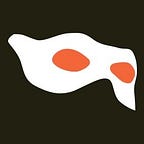You really can get coding in your classroom tomorrow
The one question we’ve been asked more than any other by teachers new to teaching coding in the classroom is ‘where do I start?’ And it’s a fair question. A quick google of coding in the classroom, or how to teach kids to code throws up so many choices: hardware, software, apps, websites, subscriptions and signups.
We really are fortunate that there are so many ways to teach kids to code! But with choice comes inertia and that feeling of being a bit overwhelmed and having fallen down a rabbit hole full of choice and sparkly things.
Start with Scratch
We can help you cut through that, right now, with an actionable plan to teach coding in the classroom tomorrow. At Code Rangers, we spend our days and weeks with children and teachers exploring coding, computational thinking and digital technologies. We’ve challenged ourselves to create complex engaging project based learning activities for students of all levels.
We always start in the same place with our students: a coding language called scratch. It’s no secret that here at Code Rangers we’re big fans of scratch and all that it stands for. It’s easy to get started, it’s free, and it encourages creativity, collaboration, and project based work which is what we’re all about. So we won’t cover the same ground again now. Today’s post is all about actionable points to grow your coding confidence and get coding today.
Following these steps
Go to the scratch website, and click create in the top left corner of your screen.
- See the cat in the window on the left? You’re going to control the cat with lines of code.
- You find the lines of code by clicking on the coloured headings in the middle section of the page, and dragging blocks to the coding area on the right of the screen.
- You can connect blocks of code together like Lego by lining them up and letting go when the block above gets a white shadow.
- When you want to run code, click it. As your project gets more complex, you’ll want to use the ‘event’ blocks to specify when code should run (say, for example you want to press space bar and have something happen, there’s an event block for that).
- Add extra characters (called sprites) to your project by hovering over the little character to the right of the words New Sprite. You can even add backgrounds to make your project look better.
Now, that’s the mechanical side of things, and you’ll find lots of tutorials which pop up automatically when you open scratch, on the right of the screen. They’ll step you through how to create a new project and show you exactly what to do.
Make it matter
If you’ve got this far, you’re doing great! Let’s think about how we can move to make our coding knowledge really stick with students. If we can create something relevant and meaningful, it’s far more likely to encourage hard work, perseverance and grit. So have a think about what else you’re doing in class, calendar dates or extra-curricular events coming up to create some inspiring projects.
Is Halloween around the corner? Great, let’s use that pumpkin sprite and some ghouls to make a spooky animation.
Studying poetry in class? How about telling a tale with code? Humpty dumpty? There’s an egg sprite and a knight on horseback waiting to be used — check out this project.
Learning about shapes in maths? How about drawing some sprites in different shapes and having them explain what they are (meet Barry Box and Pam Pyramid!).
There are infinite options to combine some coding exploration around other key learning areas and students are guaranteed to have fun.
Learn coding with the students
We’ll leave you with our top coding tips for getting started with coding in the classroom:
- Code barely ever does exactly what you think it will do the first time you run it. That’s fine. Tinker, test, repeat, until you’re happy with the results.
- Looking for ideas? Scratch is a huge online community full of code lovers sharing their projects and you can find inspiration and technical help from the search bar.
- Want to save your work? Students can create their own accounts, or you can register as a teacher and set up a group set of accounts all in one go.
- Not sure what you’re doing? Perfect! Scratch is a great way to learn alongside your students. Ask children to share what they learn as they go.
- Team up: we often start students working in pairs as they’ll talk, and figure things out between them — just check they’re swapping role from time to time.
If you’re looking for more ways to get coding in your classroom, check out our teacher’s page. If you’re in Sydney and looking for coding and digital technologies professional development workshops we’re offering NESA accredited courses you can find out more about here.
